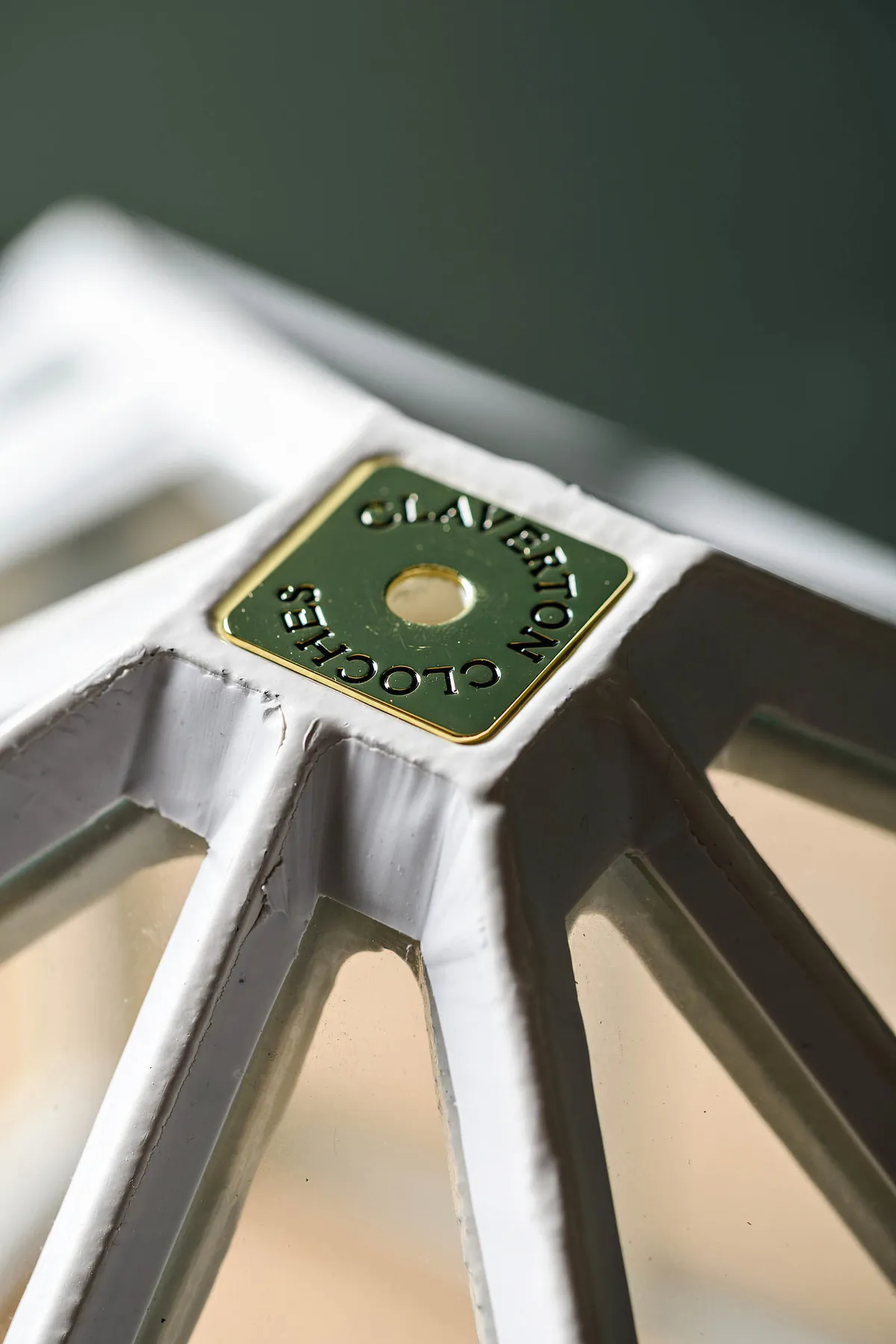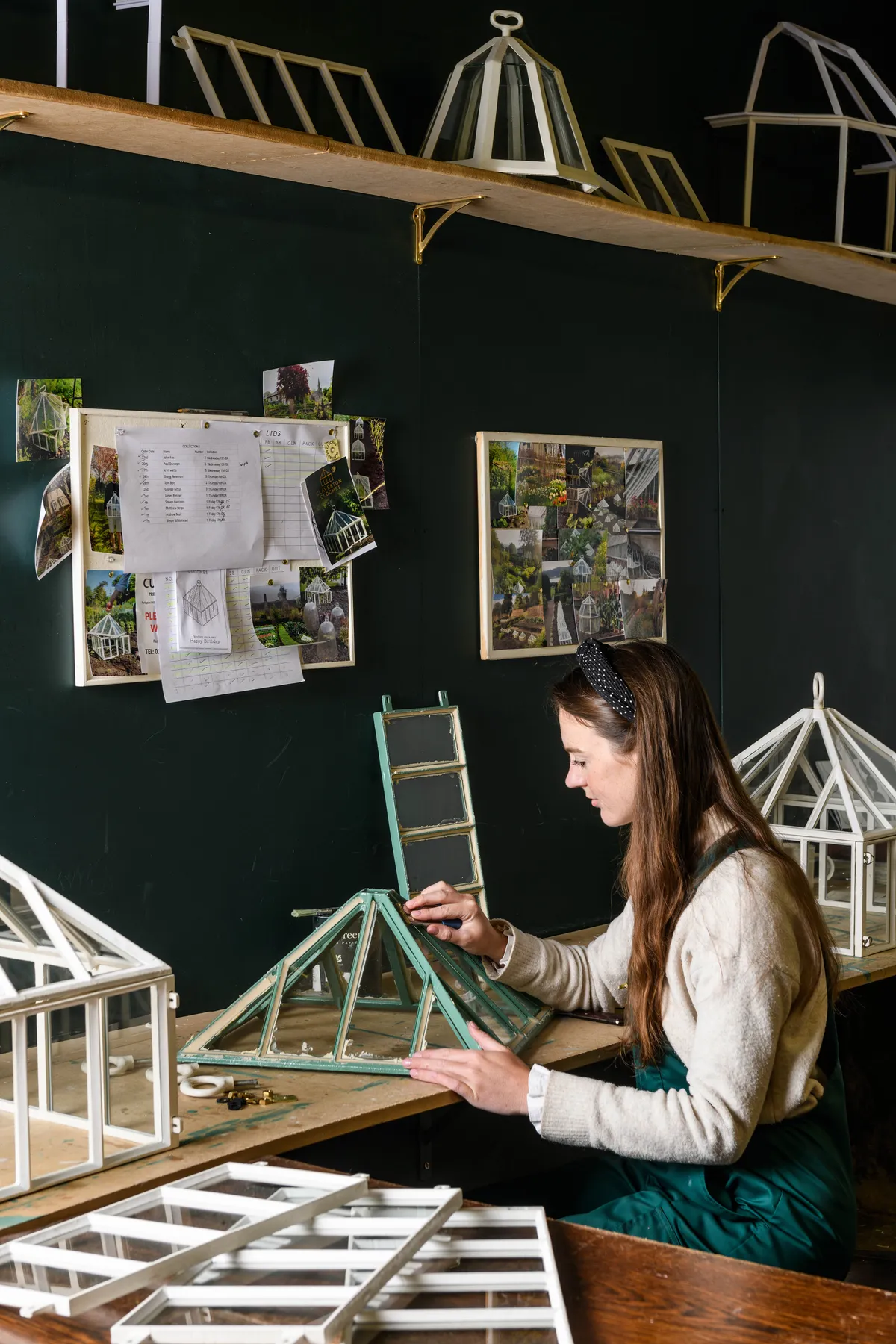Cast iron and typically painted off-white, garden cloches sit in stately rows on vegetable plots, their elegant appearance giving the look of tiny glasshouses.
Traditional cast-iron garden cloches, with their pitched roofs, resemble little houses or lanterns, neatly arranged to protect crops in bitter winter weather or to defend brassicas from hungry birds. They can help yield bountiful supplies of salad leaves and herbs in the cooler months.
Early cloches were large, dome-shaped bell jars (their name comes from the French for bell), which were used by market gardeners in France. They were once commonplace in walled kitchen gardens of country houses all around the UK, from Chatsworth to Woolbeding, but fell out of fashion.

Happily for those that love this traditional design, Beth Gregg and her partner Janus Intelmann started manufacturing their own cloches two years ago. They were trying to grow vegetables in their small, exposed back garden in Bath: 'We wanted something pretty but practical, and Janus remembered cloches he'd seen at Audley End when he visited as a child with his mother," says Beth. "We looked everywhere and could only find antique versions that were in tatters." So they started to make their own, starting a company called Claverton Cloches.
Beth and Janus were travelling in the north of England when by chance they found an old cloche for sale in Yorkshire on Facebook Marketplace. It was in terrible condition. "We brought it hope wrapped in blankets in the back of the car, and Janus used it as a model to design one," says Beth. "We found a foundry and put in a minimum order of ten. We researched what glass to buy, and turned our spare bedroom into a cloche workshop."
Beth soon realised that other people loved the cloches as much as she did. "I set up an Instagram account and posted a couple of photos of the cloches, and a woman contacted us and bought them all. She said we should make more, so we went for it."

One of their first customers was Alan Titchmarsh, who uses his cloches for his potted snowdrops and early salads. Florist Charlie McCormick's garden in Dorset is often admired for is neat rows of cloches, some of which are the new versions from Claverton Cloches. Unlike antique cloches that are prone to rusting, these new versions are galvanised and powder coated.
They make their cloches to almost the exact production methods of original Victorian cloches. One thing we noticed was how rusted the antiques were, so we make our with galvanised frames, which are powder coated. They should last for more than a hundred years, says Beth.

"Each cloche takes hours of work," says Beth. "We hand assemble them when the frame comes in from the foundry, and then cut the horticultural glass to size by hand and putty all 32 pieces in."
Now they have orders for cloches from around the world, mostly gardeners from Europe and the USA. People have reached out asking for replacement parts for antique cloches, and Beth and Janus are planning to launch a restoration side to the business, as well as supplying parts. They are also planning on launching cloches in different sizes.

At the top of each cloche, where the handle slots in, is a discreet brass plaque. Beth hopes these will be seen by future generations of gardeners.
Read more about the making of Claverton Cloches in the March issue of Gardens Illustrated, out now.
You may also like...
